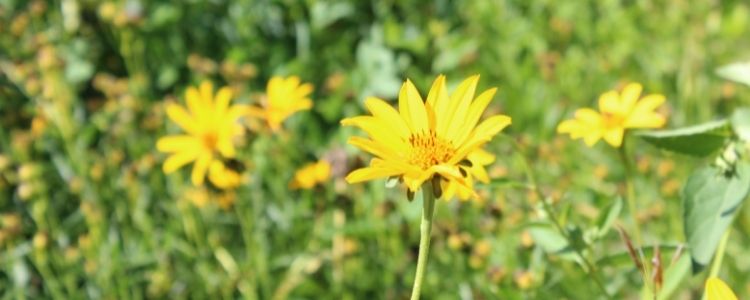People used chert, sometimes called flint, as their main resource for making stone tools.
The base structure of our rock gardens is made up of chert boulders. These boulders all come from the site and were removed from the ground where our Visitor Center and Gift shop now stand. These rocks are unique to the Blue Mounds area. They once formed the caprock on both the West and East Mound. Chert is very hard and contains many small cavities which are often filled with crystals. This gives the chert its beautiful, glistening appearance – especially when the sunlight strikes its surface.
Our rock gardens are filled with perennials of all types including many varieties of Sedum, Phlox, Chrysanthemum, Ajuga, Viola, Heuchera, Veronica, Salvia, and Armeria just to name a few. We also have thousands of bulbs including Iris, Daffodil, Tulip, and Allium. Interspersed in the perennials are native prairie and savanna plants including Coreopsis, Echinacea, Bluestem, Aster, Baptisia, and Goldenrod. These native plant elements not only help to tie together our cultivated gardens with our restoration areas, but they also create a varied and beautiful landscape blooming with color throughout the growing season.

